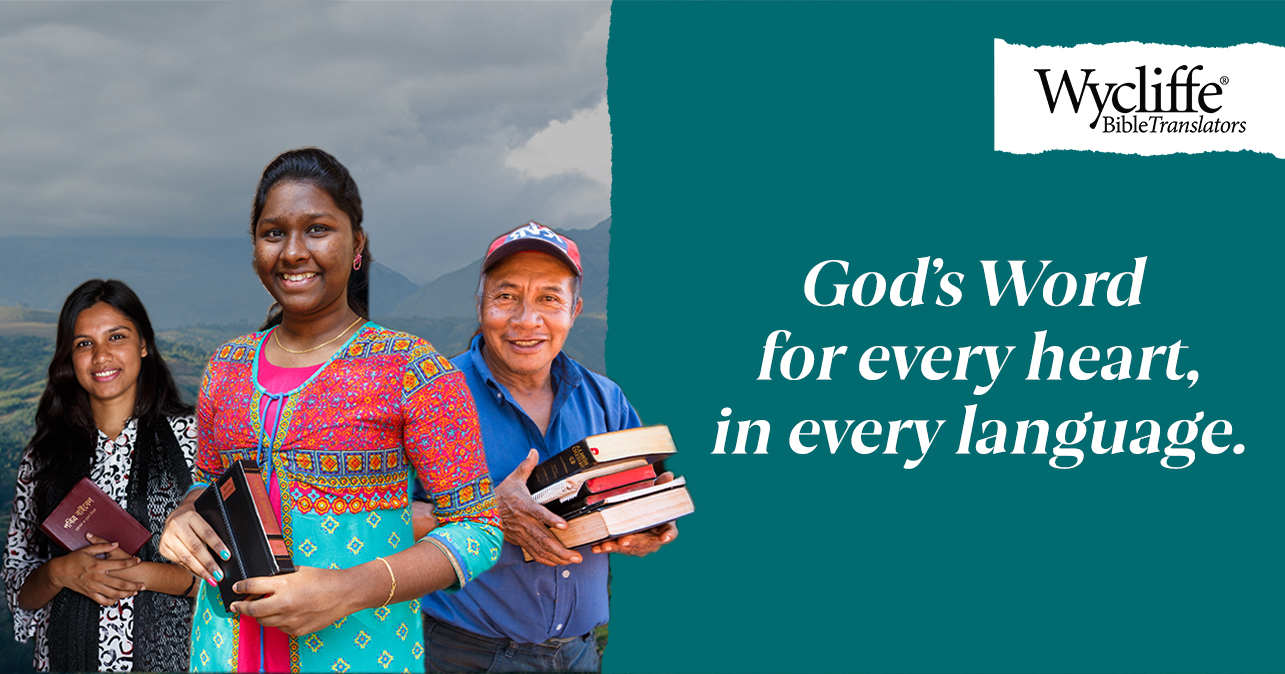

CCOG Newsletter
Weekly Updates
Friend us on Instagram @churchofgodcornelius and Facebook @corneliuschurchofgod
Reflections from Pastor Jennifer
How did Jesus fulfill the Law and prophets? A simple Google search of "How many prophecies did Jesus fulfill" will show that, conservatively, 300, and up to 560 Old Testament prophecies were fulfilled in the birth, life, death, and resurrection of Jesus. (The answer depends upon the scholar and the symbolism of each prophecy.) In each of the sacred feasts - Passover, Pentecost, etc. - Christ is represented (for more details, see the article included below the announcements). Obeying Him causes us to obey each of the moral laws given to Moses. Jesus can be seen in each part of the Tabernacle and Temple. He is the gate - the doorway for the sheep. He is the sacrifice on the altar. He is the bread of life on the table of shewbread. His body was the veil that surrounded the Holy of Holies. The praise from each of the Psalms is directed toward Him. The wisdom from each of the Proverbs is directly from Him. He did not come to abolish the Law and prophets because the Law and prophets are all about Him!
July Focus
For the month of July, our church focus is fellowship. Hence, we have been having service in the fellowship hall! Thanks for your attentiveness and participation as we study the teachings of Jesus together. To prepare for next Sunday, please read Matthew 5:27-30. We may also have time to address Matthew 5:31-32.
OCC
Help for the homeless
If you would like to join the group going to minister to our homeless neighbors, please be at church this Tuesday, July 16, in time to leave by 5pm. If you aren't able to join this time, please be in prayer for those who will be going out. Also, contributions of tents, tarps, and sleeping bags are helpful any time we go out.
YouVersion Bible App
Please remember to follow CCOG on the YouVersion Bible App. If your app is up to date, you should be able to open the app, tap "discover" in the bottom right of the page, type "Cornelius Church of God" in the search bar, choose "churches" when the search results come up, then choose to make CCOG your church. Join with us as we do a daily devotion in the book of Matthew: https://www.bible.com/reading-plans/19281
August Focus
Our churchwide focus for the month of August is Missions. The mission of our church is SOULS: Salvation, Ongoing development, Uplifting conversation, Love never fails, Serve in love. We live this out by the Acts 1:8 mandate: witnessing to those in Jerusalem (family), Judea (friends and coworkers), Samaria (the underserved), and the uttermost parts of the world (strangers near and far).
7 Feasts That Point to Christ
When I was a kid, the white-washed walls of a doctor’s waiting room pointed to only one thing: checking out the “Where’s Waldo?” book. Forget “Home and Garden” or “People” magazines — my eyes eagerly searched for the familiar time-waster of trying to find Waldo in the midst of the messy crowd.
Sorting through prophecies and symbolisms of the Old Testament can feel similar, like an intricate game of “Where’s Jesus?”
But the richness of God’s Word is that it often reveals a deeper truth if you know where to look.
Jesus often pointed to the “beginning” (Genesis), the Law of Moses (first five books) and the prophets (Jeremiah through Malachi) to reveal God’s plan for mankind and clues to recognize the Savior. For the Jews of his time, understanding the Old Testament was key to discovering that Jesus is their promised Messiah.
And if you have heard the Good News from the New Testament and received Jesus as your Savior, Old Testament prophecies and symbolism provide further proof and assurance that Jesus is the Christ, the son of the living God.
1. Passover — Leviticus 23:4-8
This feast remembers the last plague in Egypt, when the angel of death “passed over” the children of Israel who applied the blood of the lamb to their doors. The Israelites took a bundle of hyssop and dipped it into the blood in the basin at the threshold. Going up, they put it up on the lintel, then touched the two sides of the frame (Exodus 12). Can you see the imagery? Bottom to top, side to side: the motion formed a cross.
When John the Baptist said, “Look! The Lamb of God who takes away the sin of the world!” (John 1:29, NLT), he understood the Old Testament reference. And in the New Testament we see that Jesus — born in a stable, visited by shepherds and led to the slaughter — is that lamb sent for us. His death allows the judgement we deserve to pass over us.
When we accept Christ, we accept the loving gift of a second chance — because of his death on the cross, we have a clean slate!
2. Unleavened Bread — Leviticus 23:6
This seven-day feast begins on the day following the start of Passover. In the haste of the Israelites to leave Egypt, there was no time to add leaven (yeast) to their bread. During this time, remembering the hardships in Egypt and how God freed them from captivity, the Jews eat nothing leavened.
Leaven often represents sin and decay in the Bible. Once incorporated, yeast becomes an inseparable part of the bread; the same is true for sin’s effect on our lives. The Jews were constantly sacrificing unblemished animals to temporarily atone for sin. Only the Messiah, the perfect sinless sacrifice, could offer a permanent solution.
The unleavened bread represents Jesus’ sinless life; he is the only perfect sacrifice for our sins.
In John 6:35, Jesus boldly states that he is the bread of life. Not only does he remove our sins, he nourishes our souls!
3. First Fruits — Leviticus 23:10
The Feast of First Fruits is one of three Jewish harvest feasts to thank and honor God for all he provided. Although they didn’t know it at the time, the children of Israel were celebrating what would become a very important day.
The priests sacrificed Passover lambs on the 14th day of the month of Nisan, and the first day of Passover was the 15th. The Feast of First Fruits was celebrated the third day, the 16th of Nisan. This “third day” celebration was the same day that Jesus resurrected from the dead. In 1 Corinthians 15:20 Paul refers to Jesus as the first fruits of the dead. He represents the first of the great harvest of souls — including you — that will resurrect to eternal life because of the new covenant in his blood (Luke 22:20).
4. Feast of Weeks or Pentecost — Leviticus 23:16
This feast is the second of the three harvest feasts. It occurs exactly seven weeks after the Feast of First Fruits, so it’s also called Pentecost which means “50 days.” Traditionally, people were expected to bring the first harvest of grain to the Lord including two leavened loaves of bread.
God’s plan to save souls included more than the Jews. Through Jesus, this plan was revealed. In Matthew 9:37 Jesus tells his disciples that “the harvest is great, but the workers are few.” Then he put the plan into place: In Acts 1:4 he tells them to wait in Jerusalem for the Holy Spirit.
That arrival was the day the Church was born — Pentecost — and the harvest began with 3,000 souls. The message spread to both Jews and Gentiles (the two leavened loaves of bread), extending the harvest to us!
5. Feast of Trumpets — Leviticus 23:24
In a beautiful declaration God commands his people to rest. During this time all regular work is prohibited, and men and women present a food offering to God.
In Leviticus 23:24 God commands his people to gather and to commemorate the decree with trumpet blasts.
On the same front, the sound of a trumpet is also associated with the rapture, or the time Jesus will return for his bride (1 Corinthians 15:52). Once he returns, there will be a wedding feast of celebration. Revelation 19:9 says, “Blessed are those who are invited to the wedding feast of the Lamb” (NLT). He’s preparing us to celebrate!
6. Day of Atonement — Leviticus 16, 23:26-32
To make “atonement” is to make restitution for wrongs committed. As a day of humility and repentance to God, it was a time for the Jews to get their hearts, consciences and lives right before him. The observance involved the sacrifice of animals as the High Priest entered the Holy of Holies. What the High Priest did there couldn’t offer more than an annual payment for their sins. However, hiding in plain sight was the promise of one who could atone for their sins permanently (Hebrews 9:12).
Where is Jesus in these sacrificed animals? The bull and one of the goats was an offering of thanks, but the “scapegoat” took on their sins (Leviticus 16:10). The scapegoat was to be burdened with all the sins of Israel and sent into the wilderness.
The Jewish leaders condemned Jesus, and he — burdened with the sins of all mankind — was led out of the city to be crucified: “He himself is the sacrifice that atones for our sins — and not only our sins but the sins of the world” (1 John 2:2, NLT).
The necessity of the Day of Atonement was rendered void by Jesus’ death on the cross — our debt has been paid!
7. Feast of Tabernacles or Booths — Leviticus 23:34
Celebration always follows the Day of Atonement. The Feast of Tabernacles celebrates God’s provision and protection for the people of Israel during their 40 years wandering in the wilderness; for the seven days of the feast, people live in temporary structures like they did in the wilderness. The Lord himself was with the Israelites in the desert, in a tented temple called the tabernacle, so the feast also celebrates his presence as he tabernacles (dwells) with us.
Jesus is called Emmanuel, meaning “God is with us” (Matthew 1:23, NLT). He put on a temporary tabernacle — a human body — to dwell on this earth and offer himself as a sacrifice.
This feast also points to the promise that God will return and rally with his people — in the person of Jesus. And when he does, he has promised that there will be no more death and suffering, that he himself will wipe away every tear from our eyes (Revelation 21:4). His return is the final answer to the hope we’ve carried our entire lives. What a day that will be!
Unlike searching for Waldo in a messy world, we can pray for God’s wisdom as we read his Word. Even with this small glimpse into these feasts, we see his intentional love for humanity has endured centuries, and he has left us clues that foreshadow the beauty that is to come. The Old Testament has many hidden truths that, in light of the New Testament, bring a richer understanding to your life in Jesus Christ.





